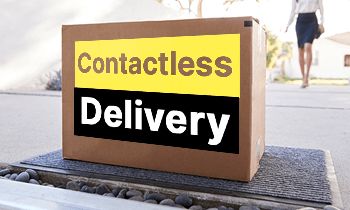‘If you build it they will come’ – said no successful mobile app ever! It does sound good, but it’s an extremely poor way to steer your app into the App marketplace. Just like you there are numerous aspiring developers launching innovative applications on a daily basis. If you don’t have a clever marketing strategy up your sleeve, be prepared for your app to sit unnoticed in a corner.

Mobile applications are more than a trend – they offer a completely new form of engagement! But once the user discovers your app and installs it on his phone or tablet, that’s just half the battle won. Do remember, the first few minutes after the user gets the app on his device can clearly determine whether they are going to be active users or if they are going to immediately uninstall it and move to other options on the App Store.
The biggest pitfalls when it comes to mobile app marketing is – flaunting your app just like a desktop app, releasing it without any plan, and releasing an app which is almost like a mobile website! Fail.
Before we move on to the most common mistakes app developers make while marketing their app, let’s take a quick look at the tried and tested ways to market your app which would always guarantee successful results:
1) Social Media
Brilliant way to market your app to your potential customers. Facebook and Twitter are two great social networking sites that offer app-install ads. You can also try Foursquare as it offers the ability to create tips and these tips can be great boosters at promoting your app.
Try incorporating a tell-a-friend feature within your app.
2) Pre-Launch Promotion
Spread the buzz about your app prior to its launch. Contact bloggers and journalists who would write about things related to your app thus driving app engagements and mobile app installs. Before the launch conduct a thorough market research, do competitive analysis and also check out paid media efforts to identify cost-effective solutions; getting hold of a good PR team can also work wonders for your app launch.
3) Plan Multiple Releases
While releasing your app, don’t pack in all the features at once as the excitement will fade away after the app has been used multiple number of times. Design your app in such a way that with every update it will always have something new and exciting to offer the user. As your app progresses over time, the newer versions of it would boost sales even more.
4) Think About ASO
App Store Optimization, which is an SEO-related activity, is the process of improving the visibility of the app. The App Store industry is dominated by various platforms and it is important that you stay updated with important data related to improving your position within the Store.
Companies handling ASO related activity will make sure that all the information surrounding your app is well-structured and relevant.
These strategies mentioned above are all great approaches to gaining user retention, driving daily usage and getting users addicted to your app no doubt, but also remember – kindly do not deploy all of them at once! Also ensure that your users attain a delightful mobile app onboarding experience. Maintaining a systematic back-up of plans keeping an open mind to experimenting always helps as some plans may work and some might miserable fail.
Earlier, marketing just meant advertising your brand on print, TV and radio jingles; and the content looked and stayed the same through all these mediums. But the advent of smartphones and the digital era have changed things completely – consumers can get in touch with your brand through more channels. In other words, you can no longer afford to zero in only on one element of your marketing and leave out the rest.
Your future business prospects, mobile app users and leads are all looking for an integrated marketing experience with your brand, and if you don’t provide one – your competitors will do it for you.
Below are 5 most common mistakes mobile app marketers make regularly and a few helpful suggestions on how to tackle them. Read on.
Mistake 1: No Content Strategy (Or A Terribly Boring One)
Content marketing is not the only way to receive organic traffic. Strategic content marketing will always deliver the right organic traffic you want and need. As David Meerman Scott says, “On the web, you are whatever you publish”, and your content is the face of your brand. So, if you do not have a systematic digital content strategy, you are in trouble!
We understand that the biggest hurdle faced by your industry is not having a content plan or just the lack of inspiration (who is going to read my content, my industry is so boring) or the most common one – lack of resources to publish.
Worry not, you don’t always need a great group of writers to develop the next best content strategy – what you really should work on is a focused commitment to provide your future prospects and app users content which they wouldn’t look for elsewhere. It’s all about connectivity.
What you can do: Are you looking for inspiration? When it comes to innovation, power and insightful content marketing, check out Coca-Cola’s Facebook page, IKEA on Pinterest, Burger King on Twitter. These are great reminders to all of us that no matter what your brand is or whichever industry you belong to, content is never boring and is something users will always look forward to!
As explained by Neil Patel in his blog, ‘How to Create a Content Strategy That Actually Drives Organic Traffic’ – “Gaining organic traffic is a slow and systematic process. You engage, you refine, you rework, and you keep at it.”
Mistake 2: Need For Speed
Speed kills but when it comes to app marketing, the faster the better. If your app takes a little longer than 3 seconds to load, 50% of your users are going to switch to the next best option. And the problems don’t stop there – slow apps would always attain a lower search ranking, which means your prospective users might never even find you even if you have a great strategy planned ahead.
Time is money and in the world of marketing, it truly is.
What you can do: Retaining your users and keeping your mobile app’s popularity running smoothly post launch depends on how quick and responsive your app is. So if your app is running slow, it’s high time to pull up your socks and optimize your app! If your newly launched app takes too much of time to launch, trim the fat. Here are a few pointers that could help:
Reduce the heavy graphics, check with your mobile app developers and optimize the app code to get rid of any glitches or a lag.
Don’t overload the app content within the launch process as this can immediately slow down the functioning of the app.
Also, before you roll out your app to your users ensure you have tested the app thoroughly for bugs and any other technical issues on all tablets and smartphones.
As stated by a leading software analytics company, New Relic says Slow Mobile Apps Ruin Everything, “Developers and app providers need to be proactive about detecting problems with their apps, and fixing those problems before users even have a chance to notice. In today’s competitive landscape, developers can’t afford to be left behind.
Mistake 3: Blowing Your Own Trumpet, Much?
Nobody likes a showoff. Don’t you just hate it when at a social event, a fellow guest brags too much about their achievements, hobbies and life without communicating with the other members of the group. Sounds familiar? Yes, this applies to mobile app marketing too!
Most of the app marketers think that users want to hear all about their brand non-stop: NO! The best brands out there share 70-80% of their content with their audiences that provides a solution or motivates that user – the remaining 20-30% is about the positives of their brand and why you should switch to it.
What you can do:When it comes to social media specifically, it should be two-way traffic: do listen to what your customers are talking, gauge their feedback, check when do they interact with your brand the most and most importantly – what kind of content clicks the best conversations, then adapt your strategy accordingly!
Mistake 4: Mobile App vs Mobile Website
Both mobile applications and mobile websites allows users to find and get access to your brand from devices they use the most, but having a mobile website and a mobile application are not the same thing. Your app is not a desktop app, don’t pretend it is. Your users are going to use your app on their smartphones and tablets, so you should market it on that itself. So how do you do it?
What you can do: The key lies in thinking about what your users are doing now on their devices, and how your product and the problem it solves would fit within that ecosystem. Don’t try to shrink your landing page into the small screen of the smartphone and claim it to be an app. Build a responsive app which would fit across screens of all devices and focus on creating an intuitive app packed with effective user experience.
For mobile apps, the marketing goal must be to integrate your app seamlessly into your users’ lives in such a way that it simplifies it and doesn’t complicate it.
As popular blogger and UX Designer Lukas Imrich from STRV states within his blog, Designing for the Web vs. Apps in the Mobile Era, “In the world of apps, the primary focus is the completion of a task. Apps are built around tasks, which should be simple in their nature. Extra features should not be hidden behind buttons; navigation should be simple and straight forward, not hidden behind icons.”
Mistake 5: Let’s Talk About Privacy
Mobile app users, especially in the US, are extremely concerned when it comes to privacy. When you are working on your app marketing strategy, ensure that your mobile marketing technology strictly follows all the industry regulations and best practices for collecting, using and securing personal data of the users.
What you can do: Before your app and marketing messages collects sensitive information, ask your users for permission and also publish a link to your privacy policy all across your websites and advertisements.
Here’s a detailed Federal Trade Commission Staff Report, ‘Mobile Privacy Disclosures’ which throws more light on this matter.
Don’t forget that feedback you get from your app users is directly proportional to your app’s success. Work on creating an interactive feedback system and install an analytics dashboard to figure out how you can keep your customers coming back for more! There’s always room for improvement, and if you are making any of the above mistakes while marketing your app, better late than never! Whether you have a short period of time to engage a business prospect or your team, the above mistakes are the most common errors committed by even the best of the app marketers.
Author’s Bio

Shoeb Ahmad, with an experience of 15+ years in Digital World, heads Digital Marketing at Mobisoft Infotech. He has a rich experience in SEM, SEO, Social Media & other verticals of Digital Media. He also has been a consultant for a variety of industries, enterprises & startups. He loves reading & traveling. He often writes on various forums since he believes ‘Knowledge increases by sharing.’ Follow him @shoeb_ahmad


